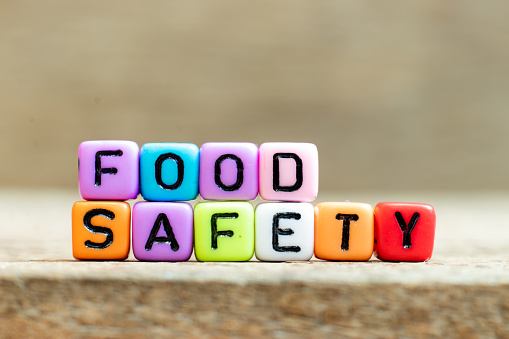26 Jul

To build a thriving restaurant business, proper compliance training must be in place. It establishes the safeguards and standards that will keep your business on track. Providing the appropriate training will empower your employees and cultivate a workplace culture that feeds directly into the success of your business.
3 Ways Training Can Protect Your Restaurant Chain
Since writing my last article, Restaurant Training: 3 Powerful Ways Restaurants Benefit From eLearning, I began noticing high profile PR disasters popping up on the news. For instance, there was an incident where the employees of a large restaurant chain were caught using company food packaging to hide illegal drugs. Another large technology company had to fire 20 of their employees over sexual harassment claims. These stories remind us of the crucial need to have proper compliance and onboarding training in place.
When it comes to creating a healthy workplace environment, one cannot assume that workers have an already in-built knowledge base for compliance issues. For that reason, it is essential to provide training for even the most fundamental company standards and regulations.
In this article, I would like to highlight 3 vital areas compliance training can help keep your business safe.
1. It Reduces Food Poisoning with Food Safety and Handling

As a restaurant, customers are your top priority. The last thing you want is for them to get sick on your watch; the results can devastate your company’s reputation, lead to a crippling fine and even closure. To avoid this scenario, your employees must be empowered with the knowledge and training they need to deliver quality service. A majority of restaurant training addresses foodborne illness and cross contamination prevention, personal hygiene, and proper food temperature. By equipping employees with knowledge in these topics, they are empowered to help prevent potential food poisoning situations.
Where I live, the Public Health Department recently rolled out the new food and safety rating system (pictured above) for Seattle and King County. The use of emojis is a clever visual for the public to make informed decisions on where to eat. After reviewing the accompanying food safety guideline, I have an even greater understanding as to why my customers take such pains to develop and mandate so many food safety and handling courses for their employees. By having the proper food and safety courses in place, the chances of food poisoning decreases and quality service increases.
2. It Reduces Sexual Harassment Lawsuits

Recent high profile scandals remind us that managers, supervisors, and employees alike must receive proper training for sexual harassment prevention. Any behavior considered to be sexually harassing in the workplace is a serious matter and can devastate an organization and its employees. Even incidences that someone might consider harmless or a joke can be perceived as sexual harassment to another.
Also, if employees are aware of the investigative and mitigation process within the company and government agency, they will learn to take this matter seriously. With the right course materials and delivery, a proper code of conduct can be instilled in your workers.
Don’t let a sexual harassment violation catch your company off guard. With the right training, respect and honor can be cultivated throughout an organization, preventing costly lawsuits and creating an uptick in workplace ethics and performance.
3. It Sets a Standard for Onboarding and Employee Orientation

The onboarding process involves more than just product and customer service training; it includes HR policy and compliance. Orientation courses provide employees the opportunity to learn the company’s commitment, policy, compensation, work standard, performance evaluation, and benefits. It helps to creates a streamlined learning process and boosts employees’ confidence in the workplace.
Even after an employee has completed their orientation courses, it is advisable to have a yearly training review and and provide easy-access to digitized copies of their employee handbook.
Keep in mind that specific positions—such as a cook, cashier, manager, waiter—have unique functions and may not be covered in the orientation. In this case, it is good to have personalized training courses per position and a Learning Management System that helps remind and track the customized learning plans for each employee.
By having a handle on company culture and knowing their role and responsibilities, employees will be happier and will perform well.
Conclusion
The big takeaway? Don’t underestimate the importance of employee training. If big corporations can mess up in the 3 points mentioned above, how much more should we do our due diligence to do everything in our power to help our employees succeed? With the proper regulation, compliance, and orientation in place, risks are lowered and a healthy workplace is cultivated. Employees can be empowered with the knowledge they need to perform well and help sustain a thriving workplace environment.
*This article was originally published on eLearning Industry
Comments are closed.
Most popular posts
-
 Online Learning vs Face t...
141.6k views | posted on April 5, 2019
Online Learning vs Face t...
141.6k views | posted on April 5, 2019
-
 Top 10 Types of Employee...
118k views | posted on May 26, 2019
Top 10 Types of Employee...
118k views | posted on May 26, 2019
-
 10 Must-Have Skills and Q...
43.1k views | posted on July 8, 2019
10 Must-Have Skills and Q...
43.1k views | posted on July 8, 2019
-
 Induction Training – How...
24.1k views | posted on July 1, 2019
Induction Training – How...
24.1k views | posted on July 1, 2019
-
 9 Most Effective Training...
21.2k views | posted on July 15, 2019
9 Most Effective Training...
21.2k views | posted on July 15, 2019
1 Comment
criar uma conta na binance
I don’t think the title of your article matches the content lol. Just kidding, mainly because I had some doubts after reading the article.
gacor
Cyberchase is an animated science fantasy children’s television series that airs on PBS Kids. The series centers around three children from Earth: Jackie, Matt and Inez, who are brought into Cyberspace, a digital universe, in order to protect it from the villainous Hacker (Christopher Lloyd).[4] They are able to foil Hacker’s schemes by means of problem-solving skills in conjunction with basic math, environmental science and wellness. In Cyberspace, they meet Digit (Gilbert Gottfried for the first 13 seasons, Ron Pardo since season 14), a “cybird” who helps them on their missions.[5]
vocal77
The best dubs go beyond the basics of the format, and make those vocal77 loops sound as if they absolutely need to be vocal77 repeated.
FranklynK
Very interesting points you have mentioned, thank you for putting up..
escape room
hello there and thank you for your info – I’ve certainly picked up something new
from right here. I did however expertise several technical points using this website, since I experienced to reload the website a lot of times previous to I could get
it to load correctly. I had been wondering if your web host is OK?
Not that I am complaining, but slow loading instances times will
often affect your placement in google and can damage your high-quality score if advertising and marketing with Adwords.
Anyway I’m adding this RSS to my email and can look
out for a lot more of your respective exciting content.
Make sure you update this again soon.. Escape room lista
vocal77
The VOCAL 100 club is our monthly lottery which raises money for carer support and pays out half of the fund in cash prizes. This
GPC Regulatory
This article underscores the significance of compliance training for restaurants, especially in today’s evolving landscape. It highlights how it can safeguard both customers and businesses. A vital read for restaurant owners and managers looking to stay ahead in the industry! 👏🍽️ #RestaurantCompliance #Training #BusinessProtection
Top 10 Types of Employee Training Programs
[…] Orientation training, there’s Compliance training – another type of training which may be needed in some departments for more specific […]
Compliance Training: All There Is To Know
[…] talked about how compliance training helps protect restaurants, but given its importance, let’s do a recap of the ways proper training can help avoid some […]